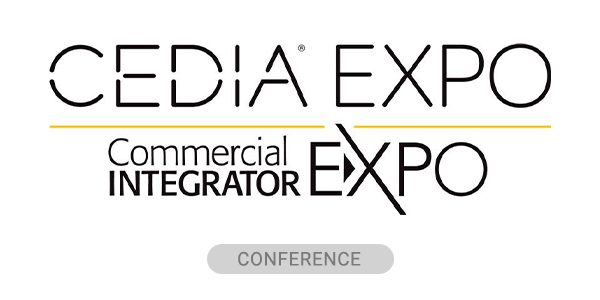In recent months, our dealers have reported seeing two words pop up across RFPs and needs discovery documents more than ever before — even on projects where there’s no apparent reason to expect them: “TAA compliance.” What does this mean, and why is demand for TAA-compliant products skyrocketing?
Let’s explore what TAA compliance entails, who must adhere to its regulations, and why more customers are demanding it — even when it isn’t legally required.
What Is the TAA?
The Trade Agreements Act (TAA) is a federal law that governs trade agreements between the U.S. and other countries. It requires that products sold to U.S. government agencies under certain contracts — like those under the General Services Administration (GSA) Schedule —must be made in the United States or a “designated country.” Designated countries include those with which the U.S. has free trade agreements, such as Canada and Mexico, and countries in the World Trade Organization Government Procurement Agreement. In short, TAA compliance ensures that the products used in federally funded projects come from trusted sources.
TAA compliance is mandatory for government contractors providing goods or services under federal contracts, including those for audiovisual integration projects. If you’re bidding on a project for a federal agency, ensuring your products are TAA-compliant is not optional. Failure to comply with TAA requirements on a federally funded project can have serious consequences, including the cancellation of contracts, financial penalties and damage to your business’s reputation.
The Roots of Rising Demand
Surprisingly, TAA compliance is now being requested on projects that aren’t tied to federal contracts. Why? The reasons range from anticipating regulatory changes to aligning with customer preferences.
One major factor is future-proofing against regulations. The geopolitical landscape is volatile, and policies regarding foreign-made technology can shift quickly. During the first Trump administration, technology from adversarial nations like China came under intense scrutiny. Chinese telecom giant Huawei was labeled a national security threat, and products from companies like ZTE were banned from federal use. With a potential return to a similar political climate, sourcing goods from friendly nations offers a smart hedge against future regulations. By specifying TAA-compliant products now, customers position themselves to adapt quickly should new restrictions emerge.
Another reason is standardized procurement policies. Many organizations, particularly large enterprises, adopt TAA compliance as a baseline requirement to streamline procurement processes and ensure consistency across all projects. This approach avoids the complexity of maintaining multiple standards for different vendors.
Customers also aim to mitigate the risk of non-compliance. Audiovisual solutions can be repurposed or adapted for future use in government-funded projects. By starting with TAA-compliant products, customers reduce the risk of needing costly upgrades or replacements. Moreover, these products lower the risk of supply chain scrutiny or contractual breaches, especially if project scopes change unexpectedly.
Perceived quality and security also play significant roles. TAA compliance often signals higher quality and stricter security standards. Products manufactured in designated countries are perceived as less likely to have vulnerabilities that adversaries could exploit. Concerns about security vulnerabilities are not hypothetical.
In 2018, a Bloomberg investigation alleged that Chinese spies planted tiny microchips on Supermicro motherboards, creating backdoors for remote access. Similarly, equipment from Huawei and ZTE has faced accusations of including backdoors for surveillance, and Kaspersky’s antivirus software — developed in Russia — was banned by the U.S. Department of Homeland Security in 2017 due to concerns about state-sponsored espionage.
Finally, some demands for TAA compliance stem from customer or stakeholder preferences. Even without a legal requirement, some organizations view TAA compliance as a reflection of their corporate values or as an added layer of security assurance. For these customers, compliance is about trust and reputation as much as it is about regulations.
Security (and Compliance) Matter on Every Component
Time and again, we’ve seen that anything connected to the network can become an attack vector. Infrastructure components, often overlooked, are not immune to exploitation. For example, the Stuxnet attack in 2010 disrupted Iranian nuclear facilities by exploiting infected USB cables. Similarly, in 2013, attackers gained access to Target’s point-of-sale systems through vulnerabilities in an IoT-connected HVAC system.
In 2017, hackers infiltrated a casino’s internal network via a smart fish tank thermometer, stealing high-value customer data. And in 2019, reports suggested that some Chinese-made Ethernet cables contained embedded microchips, allegedly enabling adversaries to intercept data. These incidents highlight the importance of securing every component in an audiovisual integration project, from AV-over-IP controllers to USB cables.
The Path Forward for AV Integrators
The growing demand for TAA compliance reflects an evolving market where security, quality, and regulatory foresight are paramount. As customers increasingly prioritize TAA-compliant products, integrators who can offer such solutions will stand out as trusted partners. By ensuring compliance across every component — not just core equipment but also peripheral devices and cabling — integrators can provide comprehensive solutions that align with customer needs.
This focus is particularly critical as geopolitical tensions persist. A potential shift in U.S. trade policy could make TAA compliance a widespread requirement for private sector projects as well as federally funded projects in practice if not in black letter law. Staying ahead of these trends will enable AV integrators to adapt quickly and continue delivering value to their clients.
In a competitive market, demonstrating expertise in sourcing and implementing TAA-compliant solutions will position integrators for success in the years to come.
Mark Corbin is president, Vanco International.










